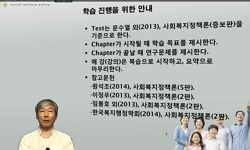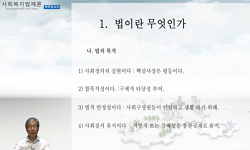본 연구는 빈부격차와 양극화가 심화되고, 종교의 사회적 책임과 역할이 강조되는 오늘날의 현실을 인식하고 고대후기 로마제국의 가난과 부의 문제를 역사적으로 성찰하고자 한다. 고전 ...
http://chineseinput.net/에서 pinyin(병음)방식으로 중국어를 변환할 수 있습니다.
변환된 중국어를 복사하여 사용하시면 됩니다.
- 中文 을 입력하시려면 zhongwen을 입력하시고 space를누르시면됩니다.
- 北京 을 입력하시려면 beijing을 입력하시고 space를 누르시면 됩니다.
고대후기 로마제국의 가난과 부
한글로보기https://www.riss.kr/link?id=G3761409
- 저자
-
발행기관
-
-
발행연도
2010년
-
작성언어
Korean
-
주제어
가난 ; Rabbinic Literature ; asceticism ; monasticism ; Pachomius ; later Roman empire ; wealth ; riches ; Salvian ; Athanasius ; Monasticism ; Augustine ; Basil ; Ambrose ; Constantinople ; Antioch ; Optatus ; Rome ; Milan ; Caesarea ; Catharge ; Alexandria ; Coptic Church ; poverty ; laws ; Biblical interp ; 부 ; 부자 ; 빈자 ; 복지 ; 빈민 ; 구제 ; 자선 ; 자비 ; 공적 부조 ; 이념 ; 소통 ; 확산 ; 그리스도교 ; 유대교 ; 후기고대 ; 고대후기 ; 로마제국 ; 신약성경 ; 랍비문헌 ; 사도교부 ; 클레멘스 ; 암브로시우스 ; 아우구스티누스 ; 시리아 그리스도교 ; 요안네스 크리소스토모스 ; 바실레이오스 ; 파코미오스 ; 수도운동 ; 성인전 ; 교회법 ; 국가법 ; 편지 poverty ; riches ; Roman Empire ; public giving ; welfare ; charity ; poor ; rich ; New Testament ; Alexandria ; Milan ; Carthage ; rome ; Constantinople ; John Chrysostom ; Basil ; Laws ; Pachomius
-
자료형태
한국연구재단(NRF)
-
0
상세조회 -
0
다운로드
부가정보
국문 초록 (Abstract)
본 연구는 빈부격차와 양극화가 심화되고, 종교의 사회적 책임과 역할이 강조되는 오늘날의 현실을 인식하고 고대후기 로마제국의 가난과 부의 문제를 역사적으로 성찰하고자 한다. 고전 고대 시대의 그리스와 로마사회에도 복지제도가 존재했지만, 빈민의 개념이 전면적으로 부각되고, 구제와 "가난한 자에 대한 사랑"이 사회적 덕목으로 자리 잡은 것은 유대-그리스도교적 전통이 고대후기 사회에 뿌리를 내리기 시작하면서부터라는 사실은 많이 알려져 있지 않다. 심지어 고전고대 사회로부터 중세 사회로 이행하는 핵심에 빈민구제가 놓여있었다고 주장되기도 한다. 이러한 점에서 유대-그리스도교적 가난과 부에 대한 관념이 어떻게 고대후기 로마제국에 도입되어 커다란 영향력을 행사하며, 이전의 사회질서를 대체하는 새로운 조직과 제도를 만들어낼 수 있었는지를 연구하는 것은 고대 그리스도교와 고대후기의 역사를 연구하는 학자들에게 매우 중요한 주제다. 뿐만 아니라 이 주제는 오늘날 복지정책과 사회보장제도를 도입하고 정착시키는 데 관심을 두는 사람들에게나, 종교의 사회적 책임을 강조하고 종교기관이 사회구성원의 복지를 위해 일정한 역할을 담당할 수 있도록 노력하는 자들에게도 유용한 자료가 될 수 있다.
이러한 인식 하에 본 연구는 본 연구는 한국과 일본과 호주 3개국 학자들의 교류와 협력 속에서 고대후기 로마제국의 가난과 부를 심층적이고 다차원적으로 연구함으로써, 유대-그리스도교적인 구제 이념이 고전고대시대의 공적 부조의 이념을 대체하고 고전고대 사회가 중세 사회로 이행하는 과정을 규명하고, 오늘날 복지제도와 복지 모델을 확립하는 과정에서 사회적 공감과 합의의 중요성을 강조하며, 종교의 사회적 기능 및 책임을 일깨우고자 하였다.
본 연구는 크게 네 가지 주제로 나누어 진행되었다. 첫째 주제는 고대 후기 로마제국의 가난과 부라는 사회경제사적 배경과 유대교라는 사상사적 배경이다. 여기서는 고대사회의 가난과 공적 부조를 전반적으로 개관하고, 특별히 파피루스 자료를 중심으로 로마-이집트의 사회경제적 상황을 연구하였다. 또한 헬레니즘 시대 이후의 유대교의 빈민구제 사상과 실천을 다루어 그리스도교의 빈민구제 사상과 실천과 비교하였다.
둘째 주제는 1-3세기의 그리스도교와 로마제국의 가난 이념과 빈민구제를 다루었다. 먼저 신약성경과 사도 교부들에게 나타난 가난과 부의 문제를 다루며, 그 다음에는 카르타고를 중심으로 하는 북아프리카 지역과 알렉산드리아를 중심으로 하는 이집트 지역의 그리스도교의 가난 이해와 빈민구제활동을 규명하였다.
셋째 주제는 4-6세기의 그리스도교와 로마제국의 가난 이념과 빈민구제를 고찰하였다. 여기서는 대표적인 다섯 지역의 교부, 즉 이탈리아의 암브로시우스, 북아프리카의 아우구스티누스, 안티오케이아와 콘스탄티노플의 요안네스 크리소스토모스, 카파도키아의 바실레이오스, 시리아 그리스도교 중심으로 교부들의 가난과 부에 대한 이해와 각 지역의 빈민구제활동을 규명하였다.
마지막 주제는 이념과 현실이란 관점으로 성인전, 국가법과 교회법, 편지 등 세 가지 영역을 고찰할 것이다. 여기서는 이념의 소통과 확산 메카니즘을 규명하는 데 초점이 두어질 것이며, 이념과 현실, 법과 실제와의 관계를 중점적으로 고려하였다.
본 연구는 다음의 독창적 공헌은 다
다국어 초록 (Multilingual Abstract)
This research project aims to study various issues relating to poverty and riches in the later Roman Empire. It covers the period roughly from the first century C.E. to the sixth century C.E. and major centers of early Christianity such as Antioch and...
This research project aims to study various issues relating to poverty and riches in the later Roman Empire. It covers the period roughly from the first century C.E. to the sixth century C.E. and major centers of early Christianity such as Antioch and Constantinople, Alexandria and Egypt, Caesarea and Cappadocia, Carthage and North Africa, and Syriac-Speaking areas, esp. Edessa. It deals with works and writings of representative church fathers such as Apostolic Fathers, Clement of Alexandria, Origen, Athanasius, Pachomius, Basil, John Chrysostom, Ambrose, and Augustine. It also includes study of papyri, monastic letters, and ecclesiastical and civic laws.
The aims of this research are as follows:
1) It aims to develop international cooperation among patristic scholars of three nations(Korea, Japan, Australia)
2) With reference to Peter Brown’s book it examines various issues related to poverty and riches with the transition from classical view of society to medieval understanding of society in mind.
3) It explores issues concerning poverty and riches with special attention to the relation between reality and rhetoric, and ideals and praxis.
4) It studies various channels (sermons, hagiography, laws) through which poverty related ideas were disseminated to the people.
This research team deals with the following topics.
1) Socioeconomic and ideological backgrounds
- Poverty and Public Giving in Greco-Roman World.
- Poverty and Riches in Pachomian monastery and Alexandrian Church reflected in Egyptian papyri
- Care of the Poor in Judaism
2) Poverty and riches in the period from the first to the three century.
- Poverty and Riches in New Testament and Apostolic Fathers
- Poverty and Riches in North Africa (Cyprian)
- Poverty and Riches in Clemens of Alexandria
(3) Poverty and riches from the fourth to the sixth century
- Antioch and Constantinople: Poverty and Riches in John Chrysostom’s Works
- Caesarea and Cappadocia: Care of the Poor in the Thought and Practice of Basil of Caesarea
- Milan and Italia: Poverty and Riches in Italian Church (Ambrose of Milan)
- Carthage and North Africa: Poverty and Riches in North African Church (Augustine)
- Syriac Speaking Areas (Edessa)
(4) Thematic study
- Poverty and Riches in Hagiographical Sources.
- Ecclesiastical and Civic Laws and Practices of Care of the Poor
- Slavery Reflected in the Writings of Church Fathers
- Discourses on poverty and Riches reflected in Letters of Monastic circles
The main contribution of this research is as follows:
1) As a part of the joint study of international scholars, it enhances, complements, and develops previous studies of Japanese and Australian scholars, and introduces vivid scholarly discussions into Korea scholarship.
2) It suggests to give more adequate attention to the relation between monasticism and poverty issues in late antiquity.
3) Pariticularly this research explores the papyrus materials and the monastic letters both of which have not sufficiently been dealt with in relation to this subject. They greatly enhance our understanding of the relation between discourses(rhetoric) and reality.











